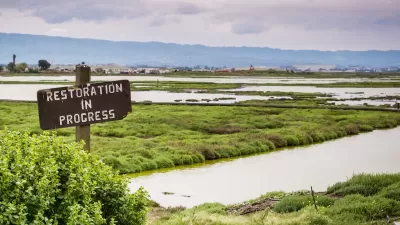The revised plan reflects the county's commitment to fighting climate change and identifies strategies, measures, and actions to mitigate greenhouse gas emissions from community activities and some municipal operations.

Climate change is a real, urgent, and significant threat, with impacts being felt today in Los Angeles County, across the U.S., and around the world. Climate change has already adversely impacted L.A. County residents—especially the most vulnerable—and can harm the health, safety, and welfare of future generations. On September 4, 2018, the County Board of Supervisors adopted a motion supporting the 2016 Paris Climate Agreement and added the County to the We Are Still In Declaration. By this action, the County is committed to adapting its programs and services to reduce unincorporated Los Angeles County's greenhouse gas (GHG) emissions and help limit global temperature increases.
This 2045 Los Angeles County Climate Action Plan (2045 CAP) is the County’s strategy to meet the goals of the Paris Agreement and achieve carbon neutrality for the unincorporated areas of Los Angeles County. The 2045 CAP builds on previous climate action work from the Unincorporated Los Angeles County Community Climate Action Plan 2020 (2020 CCAP), adopted in October 2015 as a subcomponent of the Air Quality Element of the Los Angeles County General Plan 2035. The 2045 CAP identifies strategies, measures, and actions to mitigate GHG emissions from community activities, which may include some municipal operations.
The public can provide input by reviewing and commenting on the Revised Draft 2045 CAP and Recirculated Draft Environmental Impact Report (DEIR). The public review period began on March 16, 2023 and will end on May 15, 2023. Comments should be sent to: [email protected].
FULL STORY: Climate Action in LA County

Alabama: Trump Terminates Settlements for Black Communities Harmed By Raw Sewage
Trump deemed the landmark civil rights agreement “illegal DEI and environmental justice policy.”

Planetizen Federal Action Tracker
A weekly monitor of how Trump’s orders and actions are impacting planners and planning in America.

The 120 Year Old Tiny Home Villages That Sheltered San Francisco’s Earthquake Refugees
More than a century ago, San Francisco mobilized to house thousands of residents displaced by the 1906 earthquake. Could their strategy offer a model for the present?

In Both Crashes and Crime, Public Transportation is Far Safer than Driving
Contrary to popular assumptions, public transportation has far lower crash and crime rates than automobile travel. For safer communities, improve and encourage transit travel.

Report: Zoning Reforms Should Complement Nashville’s Ambitious Transit Plan
Without reform, restrictive zoning codes will limit the impact of the city’s planned transit expansion and could exclude some of the residents who depend on transit the most.

Judge Orders Release of Frozen IRA, IIJA Funding
The decision is a victory for environmental groups who charged that freezing funds for critical infrastructure and disaster response programs caused “real and irreparable harm” to communities.
Urban Design for Planners 1: Software Tools
This six-course series explores essential urban design concepts using open source software and equips planners with the tools they need to participate fully in the urban design process.
Planning for Universal Design
Learn the tools for implementing Universal Design in planning regulations.
Clanton & Associates, Inc.
Jessamine County Fiscal Court
Institute for Housing and Urban Development Studies (IHS)
City of Grandview
Harvard GSD Executive Education
Toledo-Lucas County Plan Commissions
Salt Lake City
NYU Wagner Graduate School of Public Service





























